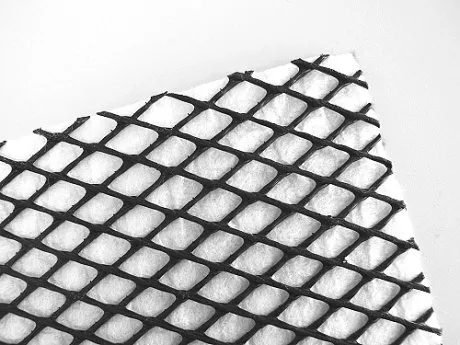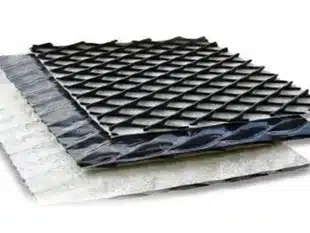+86-159 9860 6917
info@geofantex.com
geofantex@gmail.com
+86-400-8266163-44899
Geocomposite drains are innovative solutions revolutionizing water management in construction and civil engineering projects. These advanced materials combine the best of geotextiles and drainage cores to offer exceptional drainage capabilities. Geocomposite drains are designed to efficiently collect, transport, and disperse excess water, making them a go-to choice for applications like retaining walls, green roofs, and subsurface drainage systems. In this article, we dive into the world of geocomposite drains, exploring their construction, benefits, and the diverse ways they contribute to improved drainage efficiency. Whether you’re looking to prevent soil erosion, reduce hydrostatic pressure, or enhance moisture control, geocomposite drains are the versatile and reliable solution you’ve been searching for.

What is a Geocomposite Drain?
A geocomposite drain is a synthetic, engineered material designed to efficiently collect and transport water, gases, or other liquids from one location to another. It consists of multiple components, including a core, filter fabric, and geotextiles. The core is typically made of a three-dimensional, high-flow, plastic drainage core, which facilitates water flow, while the filter fabric and geotextiles prevent soil intrusion, ensuring the long-term performance of the drain.
What is the difference between geocomposite and geotextile?
A geocomposite consists of a combination of one or more geosynthetics, specifically a geogrid, a geotextile, a geomembrane, and/or a geonet, with another material. Geotextiles are used primarily for applications requiring separation, filtration, reinforcement, and drainage.
What is the main function of geocomposites?
Geocomposites are used for basic functions of roadways such as separation, drainage, filtration, and reinforcement. Geocomposites can be used to increase the strength and stability of underlying soil in a roadway.
What is a Geocomposite Strip Drain?
A geocomposite strip drain, also known as a drain strip, is a narrow drainage solution used primarily in landscaping and civil engineering projects. Its design includes a thin, elongated core surrounded by filter fabric and geotextiles. Geocomposite strip drains are particularly useful in managing excess surface water, preventing waterlogging, and maintaining soil stability in areas like gardens, athletic fields, and roadways.

Geocomposite drains are revolutionizing the way we manage water in various industries. These innovative drainage solutions, equipped with high-flow plastic cores and protective filter fabrics, provide efficient water collection and transportation. Whether in civil engineering, landscaping, agriculture, or environmental remediation projects, geocomposite drains ensure optimal drainage, preventing water-related issues such as erosion and soil saturation. Discover how geocomposite drains can transform your projects, delivering cost-effective and environmentally friendly water management solutions.



Get Free Sample
We’ll respond as soon as possible(within 12 hours)





















